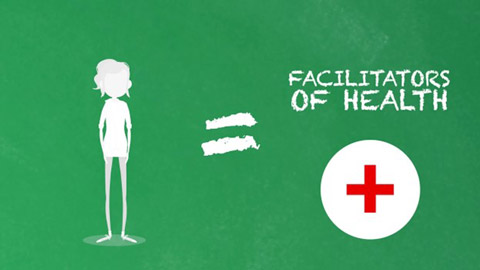
Osteopathy is a manual treatment applied to areas of restriction or tissue texture changes in the body by applying gentle pressure and/or movement to reposition physical structures, thereby improving overall physical function.
Founded in 1874 by Dr. Andrew Taylor Still, Osteopathic Medicine was borne as a philosophy and science of health and healing out of dissatisfaction with the medicine of his day.
A spiritual man and divergent thinker, Dr. Still recognized the importance of sufficient arterial and venous blood flow, lymphatic and neurotrophic flow and their relationship to the patient’s overall health. He also recognized the importance of the musculoskeletal system and its relationship to health and disease.
An osteopathic practitioner’s intent is to harmonize the body’s musculoskeletal, circulatory, lymphatic and nervous systems as well as restore mobility, decrease pain and bring a natural balance back to the body.
The Four Pillars of Osteopathy:
- The body is a dynamic unit and the patient represents a combination of mind, body and spirit
- Structure and function are reciprocally interrelated
- The body is capable of self-regulation, self-healing and health maintenance
- Rational treatment is based upon integration of the first three principles into the total care of the patient
https://www.youtube.com/watch?v=8uhO-GirLCA
Symptoms Treated
Osteopathy can treat a number of different symptoms, some of which include:
- Pain and restriction in the foot, knee or hips
- Gastrointestinal issues
- Sore shoulders and restricted motion
- Pain in arms or wrists
- Back or neck tightness or pain
- Pelvic pain
- Jaw pain
- Nerve impingement, and
- Headaches
Although osteopathic practitioners do not diagnose or treat medically, we also help conditions with the more familiar names of:
- Golfers elbow
- Sciatica
- Thoracic outlet syndrome
- Migraines
- Patellofemoral syndrome
- Carpal tunnel
- Irritable Bowel Syndrome, and
- Bursitis
Osteopathic practitioners DO treat the structural imbalance that is present at the time of treatment. This often results in improvement and notable changes in symptoms/presentation of these medical conditions.
What Guides Osteopathic Treatment? Structure-Function Relationship Models
- Mechanical Model: This model deals with factors that alter posture, motion and gait. These factors include altered joint relationships, muscle imbalances, and abnormal fascial tensions. The goal of treatment within this model is the restoration of free motion within the body’s musculoskeletal system.
- Neurological Model: This model examines how the spinal nerves are externally influenced and thus facilitated, the influence of the autonomic nervous system and its pain fibres on the immune network of the neuroendocrine system and the function of proprioception. Osteopathic practitioners consider this model in trying to reduce pain, and improve your body’s immune and hormone function.
- Respiratory-Circulatory Model: This model addresses altered respiratory mechanics which may put you at risk of congestive changes, decreased lymphatic flow, venous return and swelling. The treatment goal within this model is to restore the body’s ability to adequately move air and fluids throughout its systems.
- Biopsychosocial Model: This model serves to recognize and consider the psychological, cultural, socioeconomic, environmental and physiological stressors that impact the health and well-being of the patient. The treatment goals for this model look to relieve stress on the body as a whole.
- Bioenergetic Model: This model seeks to maintain balance between energy distribution, production and expenditure. Maintenance of this balance keeps the body adaptable to stressors which include but is not limited to immune function and nutrition. Osteopathic manual therapy can mitigate poor energy distribution throughout the body.
What To Expect With Osteopathic Treatment
When you attend your first treatment, you will be asked in detail about your condition, medical history and present state of health. There will be a physical examination focusing on spine, posture and movements. Please wear something comfortable and loose fitting - please no denim, skirts/dresses or restrictive clothing.
There will be a range of hands on treatment approaches that may range from things that feel like stretching, compression, traction, oscillation, muscle activation/resistance and guided breathing. Some techniques are so subtle it can feel as though we are doing nothing at all, while other times you may be instructed to move in particular ways to assist and facilitate the treatment. Treatment may be applied in the following positions: seated, laying on your back, laying on your stomach or laying on either side. Accommodations are made if there is a position that is unattainable for you.
Our Promise to you:
- To be treated with dignity and respect as an individual with no exception for age, gender, creed, race or sexual orientation
- To be handled gently at all times with care and consideration. There may be times when treatment is uncomfortable due to the necessity to challenge the body’s restrictions, however efforts are made to avoid pain beyond what you are already experiencing.
To schedule an appointment please call 905-469-2973, alternatively you can book your initial assessment online at https://healthybalance.janeapp.com/#/staff_member/31/treatment/38.
